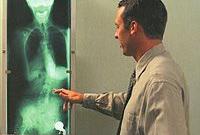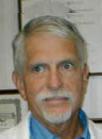PATHOLOGIC ANATOMY - one of the major medical disciplines studying pathological processes and disease through morphological studies. It is among of the main parts of the general pathology. Its tasks include:
1) Identification and description of macro- and microscopic changes arising during pathological processes and diseases;
2) elucidation of the mechanism of development these changes;
3) comparison of the morphological changes studied in the dynamics, the data pathophysiological research and clinical disease. Pathological anatomy - the most important part of scientific medicine, its achievements are often are crucial in revealing the nature of the disease.
According to the existing principle of systematics pathological processes, pathological anatomy is divided into two sections: general and private.
General pathological anatomy gives the characteristics of a typical of general pathological processes having general patterns of development and general features irrespective of location and conditions of their occurrence. By Such typical general pathological processes are the different kinds of tissue dystrophy, necrosis, circulatory disorders (hyperemia, ischemia, stasis, thrombosis, heart attack, and others.), inflammation, regeneration, tumor.
The private pathological anatomy studies morphology, morphogenesis, pathogenesis, pathological changes of individual organs, systems and specific form of the disease.
Pathological anatomy is developing, using the achievements of clinical disciplines, biology, histology, biological chemistry, pathological physiology, microbiology, which in its turn, receive from the pathologic anatomy a lot of the scientific directions. At the same time pathological anatomy is closely related to clinical practice; it enriches all areas of clinical medicine important materials about painful changes, helping to raise funds for their prevention.
The basic material the pathological anatomy is produced by autopsies of persons who died from the disease. Autopsies carried out taking into account the clinical data, allow to identify and study the morphological substrate of the underlying disease, its complications and associated changes. In its activities, doctors use this information, according to individual anatomical and physiological characteristics of the patient, inherent to him character reactivity (in particular in relation to the disease), the impact of previous changes and diseases, complications and treatment measures.
Pathological anatomy studies the morphological changes not only at autopsy of the deceased, but also in patients by studying tissues, excised for diagnostic purposes. In clinical practice (especially surgical, gynecological, dermatological, et al.) the study of the material the biopsies allows to clarify diagnosis and tactics of surgical and conservative treatment (in particular surgery and radiotherapy).
Postmortem examination also exposed organs and tissues, removed during surgery, allowing you to specify the nature of the pathological process in them and get a better understanding of the dynamics of the pathological process.
hide
 PATHOLOGIC ANATOMY - one of the major of medical disciplines that studies the pathological processes and disease by means morphological studies. It is among of the main parts of the general pathology.
PATHOLOGIC ANATOMY - one of the major of medical disciplines that studies the pathological processes and disease by means morphological studies. It is among of the main parts of the general pathology. 






